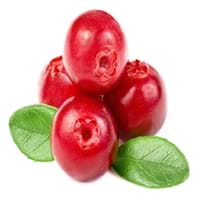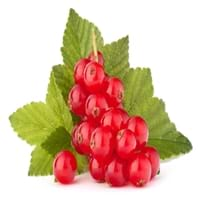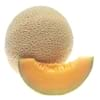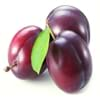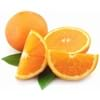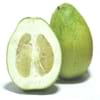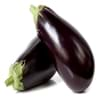Health Benefits
Cancer prevention, Heart care, Kidney stone treatment, Scurvy treatment, Ulcer prevention
Cancer prevention, Gout treatment, Heart care, Regulation of heart rate, Treatment of rheumatism
General Benefits
Anti-inflammatory properties, Boosts immune system, Digestive aid, Fights against infections, Strengthens bones
Anti oxidant properties, Controls blood pressure, Cures fever, Digestive aid, Healing of wounds, Helps in weight loss, Strengthens bones
Skin Benefits
Anti-aging benefits, Reduces wrinkles, Skin rejuvenation, Treatment of acne
Brightens and lightens complexion, Reduces wrinkles, Treatment of acne
Hair Benefits
Promotes longer and healthier hair, Protects hair, Treatment of dandruff
Protects hair
Allergy Symptoms
Anaphylaxis, Breathing difficulty, Itching, Skin rash, Swelling of mouth, tongue or lips
Abnormally rapid heart rate, Anaphylaxis, Breathing difficulty, Hives, Itching, Swallowing difficulties
Side Effects
Allergic reaction, Diarrhoea, Nausea, Stomach pain, Vomiting
Possibly unsafe during pregnancy
Best Time to Eat
Any time except an hour after meal, Don't consume at night and before bed
Best if taken as a breakfast (or empty stomach), As a snack in the late afternoon, Don't eat after meal, Morning time (before lunch)
Vitamin B5 (Pantothenic Acid)
Vitamin C (Ascorbic Acid)
Vitamin K (Phyllochinone)
Calories in Fresh Fruit with Peel
Calories in Fresh Fruit without Peel
Not Available
Not Available
Calories in Frozen Form
Not Available
Calories in Canned Form
Not Available
Varieties
Early Black, Howes, Ben Lear and Stevens
Rovada, Stanza, Red Lake, Junifer and Jonkheer van Tets
Taste
Bitter, Tart
Sour, Tart
Origin
North America
Europe
Soil Type
Clay, Sandy, Well-drained
Moist, Well-drained
Climatic Conditions
Warm
Cold
Facts about
- Europeans thought the cranberry blossom looked like the head of a sandhill crane, hence the name Cranberry.
- They are also known as bounce berries as they bounce when they ripe.
- Cranberries do not grow in water.
- The albino version of red currants known as white currants, are often sold as different fruit.
- Red currant tea is healthy substitute for coffee.
- There are more than 150 varieties of red currants.
Top Producer
United States of America
Russia
Other Countries
Azerbaijan, Belarus, Bulgaria, Canada, Latvia, Macedonia, NA, Romania, Tunisia, Ukraine
Belgium, France, Germany, Ireland, Italy, Netherlands, Poland, Portugal, Scotland, Spain, Sweden, United Kingdom
Top Importer
Europe
Germany
Top Exporter
United States of America
Russia
Botanical Name
Vaccinium Macrocarpon
Ribes rubrum
Synonym
Oxycoccus macrocarpus
Not Available
Subkingdom
Tracheobionta
Tracheobionta
Division
Magnoliophyta
Magnoliophyta
Class
Magnoliopsida
Magnoliopsida
Subclass
Dillenhidae
Rosidae
Order
Ericales
Saxifragales
Family
Ericaceae
Grossulariaceae
Species
Vaccinium macrocarpon
R. rubrum
Generic Group
Heath
Saxifrage
Difference Between Cranberry and Red Currant
We might think that Cranberry and Red Currant are similar with respect to nutritional value and health benefits. But the nutrient content of both fruits is different. Cranberry and Red Currant Facts such as their taste, shape, color, and size are also distinct. The difference between Cranberry and Red Currant is explained here.
The amount of calories in 100 gm of fresh Cranberry and Red Currant with peel is 46.00 kcal and 56.00 kcal and the amount of calories without peel is Not Available and Not Available respectively. Thus, Cranberry and Red Currant belong to Low Calorie Fruits and Low Calorie Fruits category.These fruits might or might not differ with respect to their scientific classification. The order of Cranberry and Red Currant is Ericales and Saxifragales respectively. Cranberry belongs to Ericaceae family and Red Currant belongs to Grossulariaceae family. Cranberry belongs to Vaccinium genus of Vaccinium macrocarpon species and Red Currant belongs to Ribes genus of R. rubrum species. Beings plants, both fruits belong to Plantae Kingdom.
